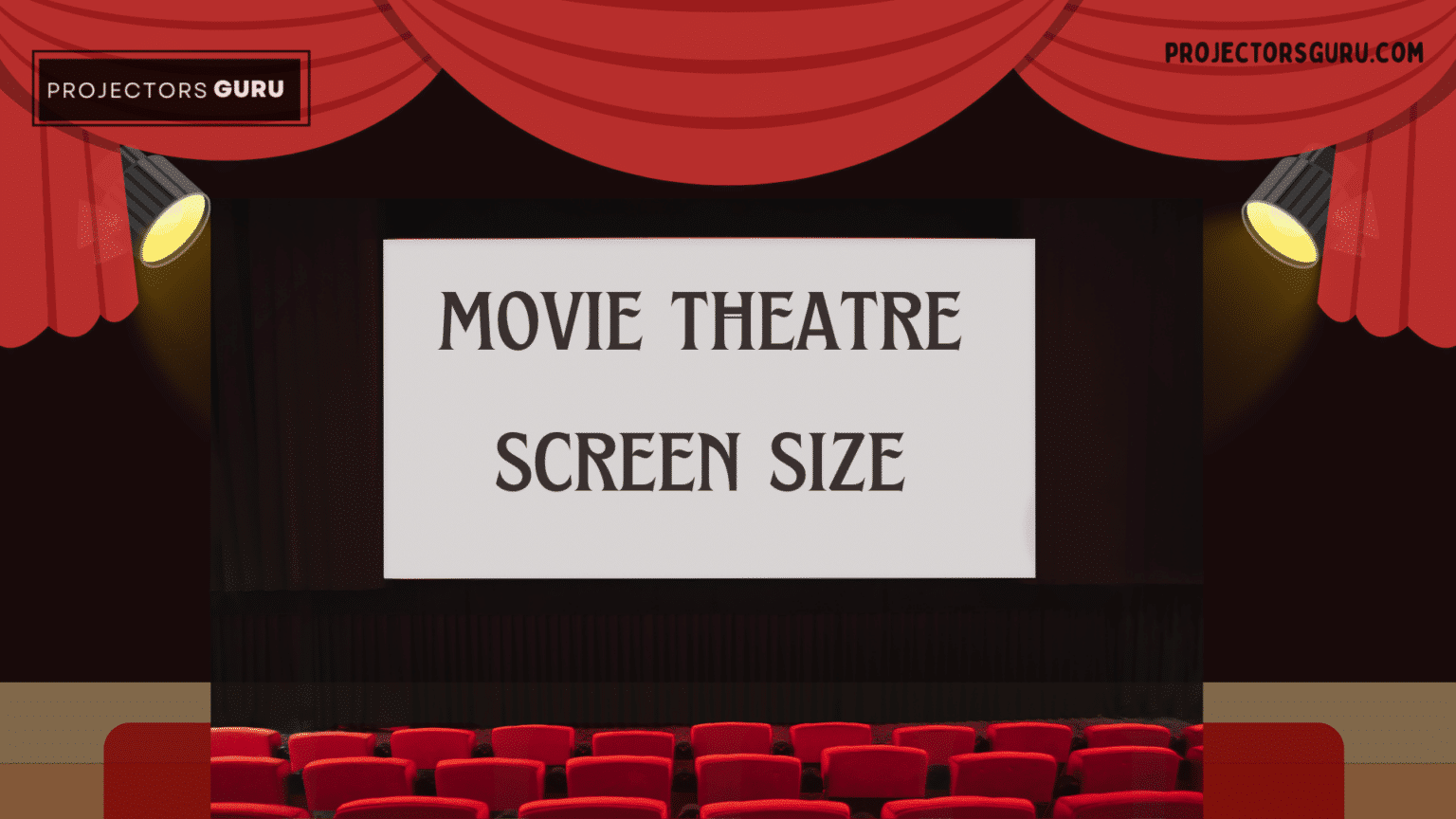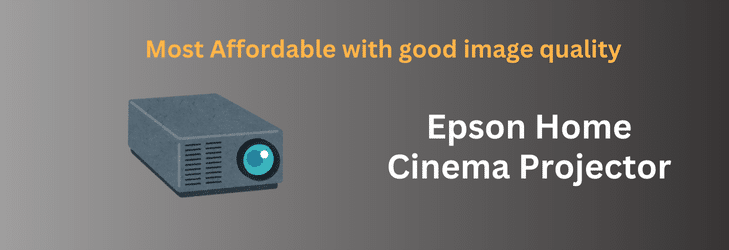Ready for a grand movie night this weekend? Great 3D movies look GREAT on bigger screens. You all agree, right? Why do you think that is? We think that experiencing a good movie theatre screen size makes your visuals so brilliantly amazing that even when you go back home, you may not be able to forget all that over-the-top experience. Isn’t it so mind-blowing? A bigger picture movie looks good behind a superb quality projector to up the game of our cinematic trip. Also; you know the smallest movie theaters have one screen and viewing room. In the 2010s, most theaters had several screens. Now, talking about the size of a screen; typical dimensions for standard screens are 20 to 30 feet high and 45 to 65 feet wide. The aspect ratio of the movie will also influence the screen size (occasionally). Screens in movie theaters can be as broad as 40 to more than 70 feet (21.3 meters) wide, or · 3,100 square feet (288 square meters), which improves the immersive experience.
The most cost-effective solution is to install a multi-aspect ratio screen. Typically, widely used movie screens range in size from 30 to 90 feet wide by 10 to 30 feet tall. Now, understanding the right ratio for your move screen is essential as well. Therefore, let’s uncover the projection screen mystery behind the size of your visuals!
Does Size of a Theatre Screen Matter?
Imagine a warm winter evening, and you have switched on your ultra-short throw projector and are about a classic movie. Sounds great, right? BUT WAIT! What about the perfect size of your movie screen? You must know that the size of your movie theatre screen does matter a great deal. Knowing the dimensions of a movie theater screen helps select the ideal home theater projector screen. Elements like aspect ratio, viewing distance, and screen material are essential for the home setup. Choosing the appropriate screen size and projector guarantees the best possible home theater experience, regardless of whether you’re going for an extensive, theatrical look or a more compact setup. Let us look at how big exactly is a movie theatre in terms of size.
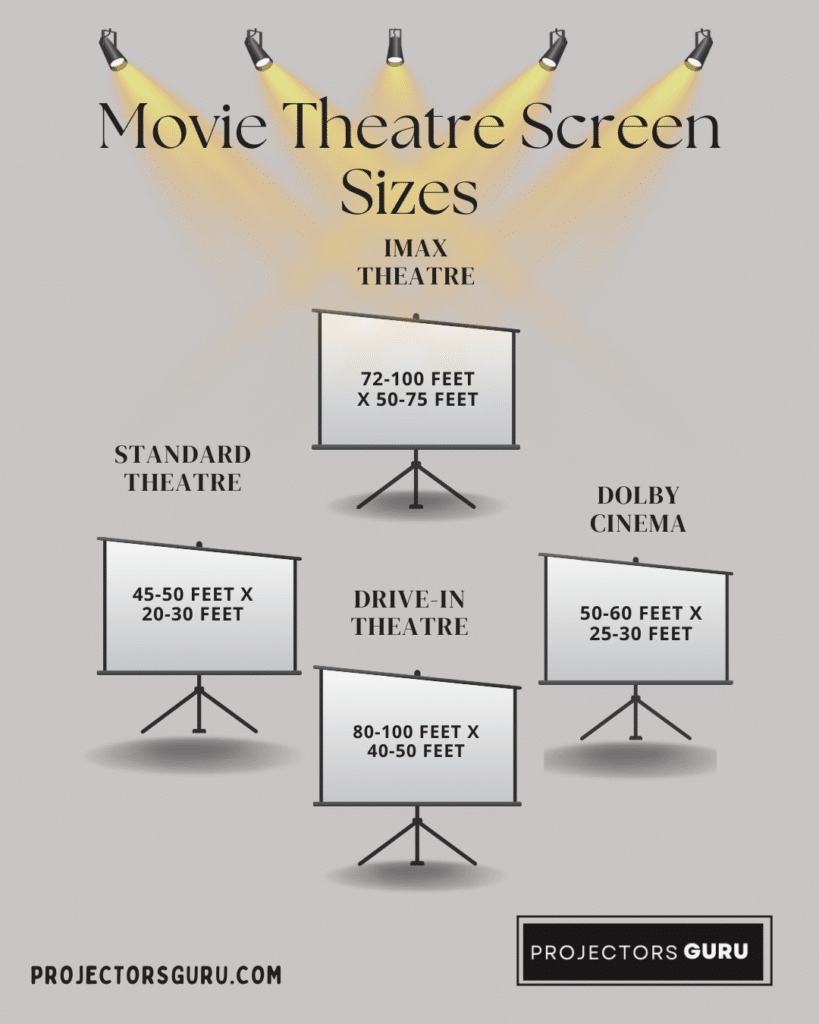
How Big is a Movie Theatre?
There are different sizes for movie theater screens; It is said, if you want the screen to be as immersive as a Wehrenberg theater, it needs to be five elephants high.
Here’s a look at them.
- Standard Movie Theatre Screen Size: Typical dimensions for standard screens are 20 to 30 feet high and 45 to 65 feet wide.
- Large-Format Displays: Dolby Cinema or IMAX displays frequently measure more than 40 feet high and 70 feet wide.
These measurements produce a spectrum of visual perceptions, from tiny to enormous. Premier venues offer large-format displays for immersive viewing, whereas smaller theaters use conventional screens. Screen size dramatically impacts the viewing experience in a giant IMAX or a small neighborhood cinema.
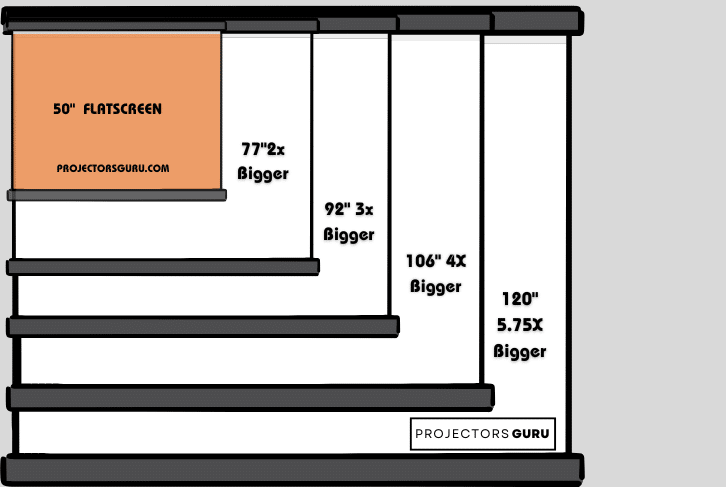
Best Screen Types for Home Theater
Choosing the right screen enhances your home theater experience. Here are the top options;
- OLED: Offers deep blacks, vibrant colors, and high contrast for stunning visuals. However, it’s expensive and may risk burn-in over time.
- 4K LED/LCD: Provides bright, high-resolution images at a more affordable price but can suffer from limited viewing angles and backlight bleed.
- Projector Screens: Perfect for creating a cinematic feel with flexible installation. They work best in dark rooms but require an initial investment in a projector and screen.
- QLED: Combines vivid colors and brightness with good color accuracy but offers only slight improvements over standard LED screens.
For the best results, consult an expert to match your preferences and room setup.
A View at Factors Influencing the Screen Size of Movie Theatre
Do you know there are some pointers that affect the movie screen size? Let’s look.
- Ratio of Aspect: The aspect ratio of a screen, like 16:9 or 2.35:1, influences the way movies are displayed and the screen type you choose for your projector.
- Type of Projection: Digital projectors typically have standard aspect ratios; however, for immersive experiences, larger screen-format and IMAX screens require unique ratios.
- Screen Substance: The screen material affects image quality. Better color accuracy and contrast make high-quality displays ideal for home and business use.
Home Theatre vs. Movie Theatre Screen Size
Let us take a look at the difference between a home theatre and movie theatre screen size.
Screens in Movie Theaters
Screens in movie theatre are rather big. Here are some of the factors their size depends upon.
- Size: Much more significant, intended to engross big crowds fully.
- Impact: This creates a more dramatic effect by filling the peripheral view.
Screens for Home Theaters
As you all must know, the size for this kind of home theater may vary as compared to the one inside cinema.
- Size: Lesser, but valuable if selected by the room’s dimensions.
- Customization: Enables a customized viewing experience with suitable dimensions for various areas.
Although movie theater displays are large and command attention, home theater screens are more adaptable and can produce a cinematic atmosphere with ambient light exclusive to their viewing spaces. A home theater system of the proper size can provide a fulfilling and immersive experience.
The Expert POV 🎥
Experts like SMPTE and THX set standards for optimal viewing angles to ensure a great movie experience;
- SMPTE: Recommends a 30° viewing angle for a comfortable and immersive experience.
- THX: Suggests a closer 36° viewing angle for heightened engagement.
- Key Insight: Larger angles = closer seating for a more cinematic feel.
Customer feedback consistently aligns with these principles, ensuring satisfaction when theaters follow these expert guidelines.
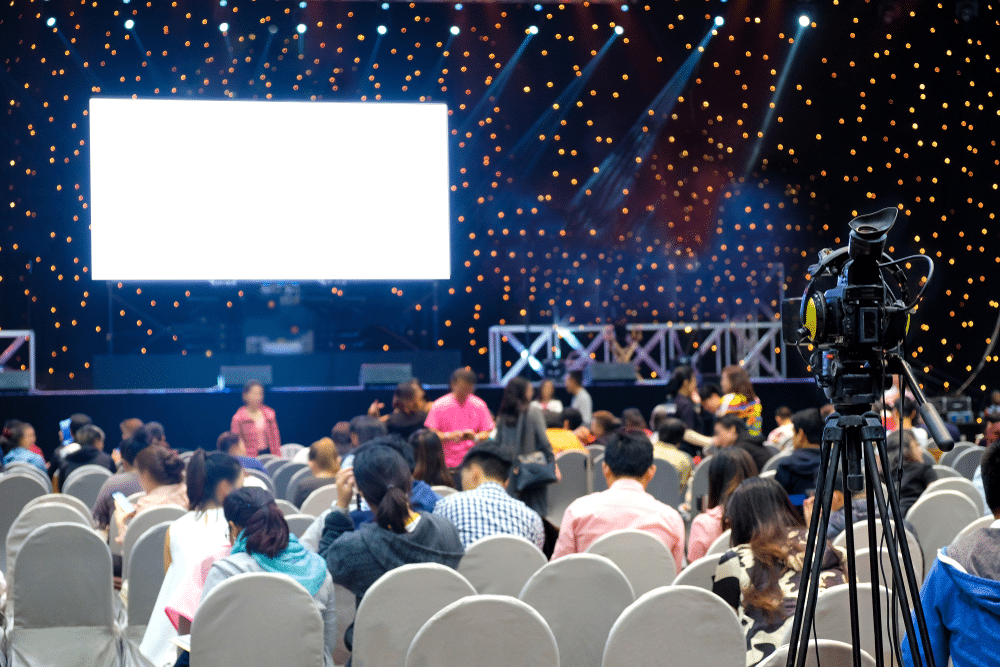
Choosing the Best Projector Screen for Home Theatre
Choosing the perfect projector screen requires taking into account several important factors.
- Screen Material: Select screen materials that minimize glare and improve color accuracy. Elite Screens and related brands screens offer a variety of choices suitable for different projectors and room conditions.
- Screen Size and Viewing Distance: Select a screen size appropriate for your room’s size and distance from the viewer. Also, a bigger screen makes for more engaging viewing angle, but it needs to make sense in your room.
- Screen Design: Consider the mounting options and the screen’s frame. A well-designed screen should guarantee simple installation and blend in with the aesthetics of your long home theater.
Bigger is Better: The Ultimate Theater Vibe
Want that true cinema feel? A larger screen is the way to go! Front projectors shine for setups where seating is over 12 feet away. Here’s why;
- Flat panels beyond 85” get pricey.
- Projectors easily handle bigger screens with modern tech.
- Consider light output for screens over 150” diagonal.
- With the right projector, your theater becomes a jaw-dropping experience. Bigger screens? Totally worth it.
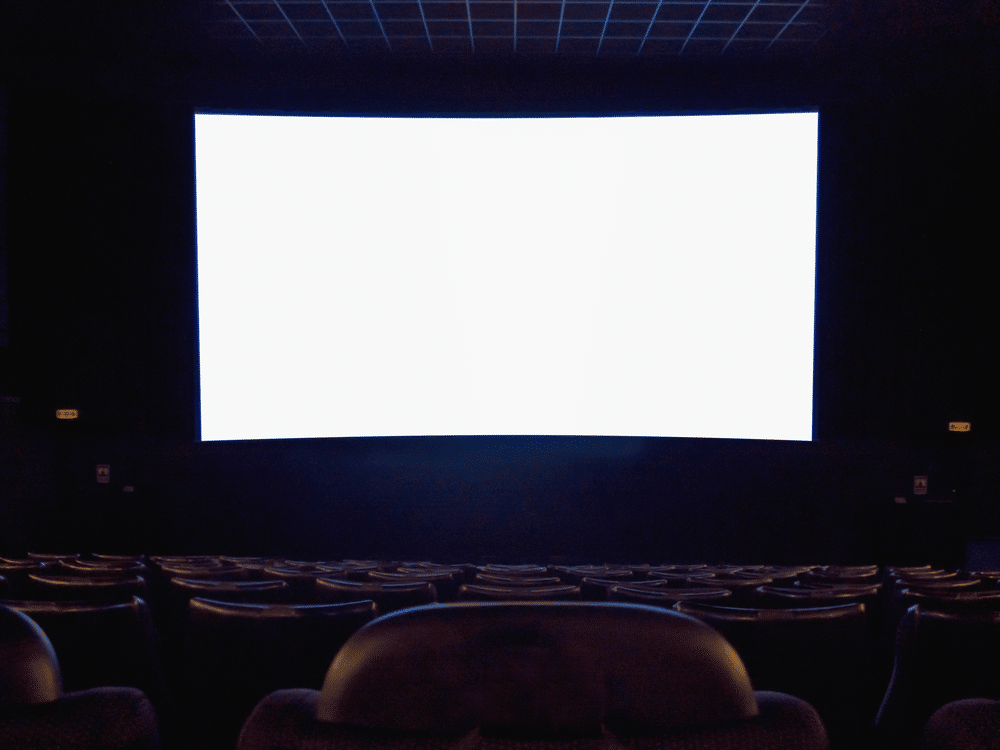
Final Picture
As we come to an end, size is essential when it comes to the movie theatre screen sizes. The essence of moviegoing experiences is reflected in the question, how big is a movie theater screen? The width of movie theater flat panel screens varies greatly, from thirty to more than seventy feet, depending on theater architecture and aspect ratio, among other things.
In conclusion, when comparing them to home theater design projector screens, one finds that although the former may provide a more personal experience, the latter are less massive than their commercial counterparts.
HERE’S TO A BIGGER PICTURE VIBE!
FAQs
Most are 45-65 feet wide and about 20 feet tall.
IMAX screens can be over 100 feet wide.
They enhance immersion with larger visuals.
No, smaller screens can offer sharper images.
Measure the diagonal from one corner to the opposite corner, typically in a 16:9 aspect ratio for widescreen formats.
Choose a size that fits your room and allows comfortable viewing, usually between 100–150 inches diagonally.
Yes, rectangular layouts with proper seating distance and acoustic treatments work best.
Use high-resolution projectors with screens designed for ambient light rejection or white matte for dark rooms.


